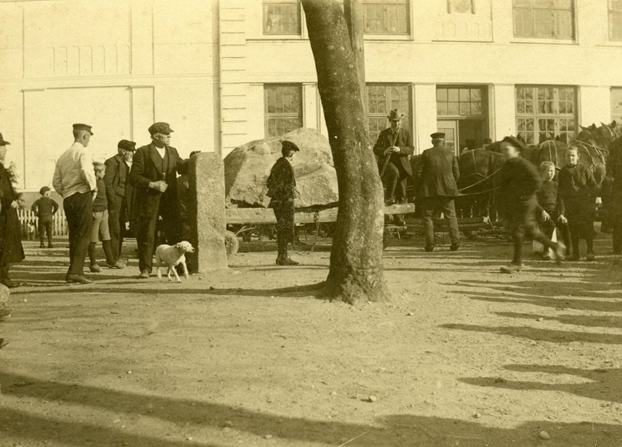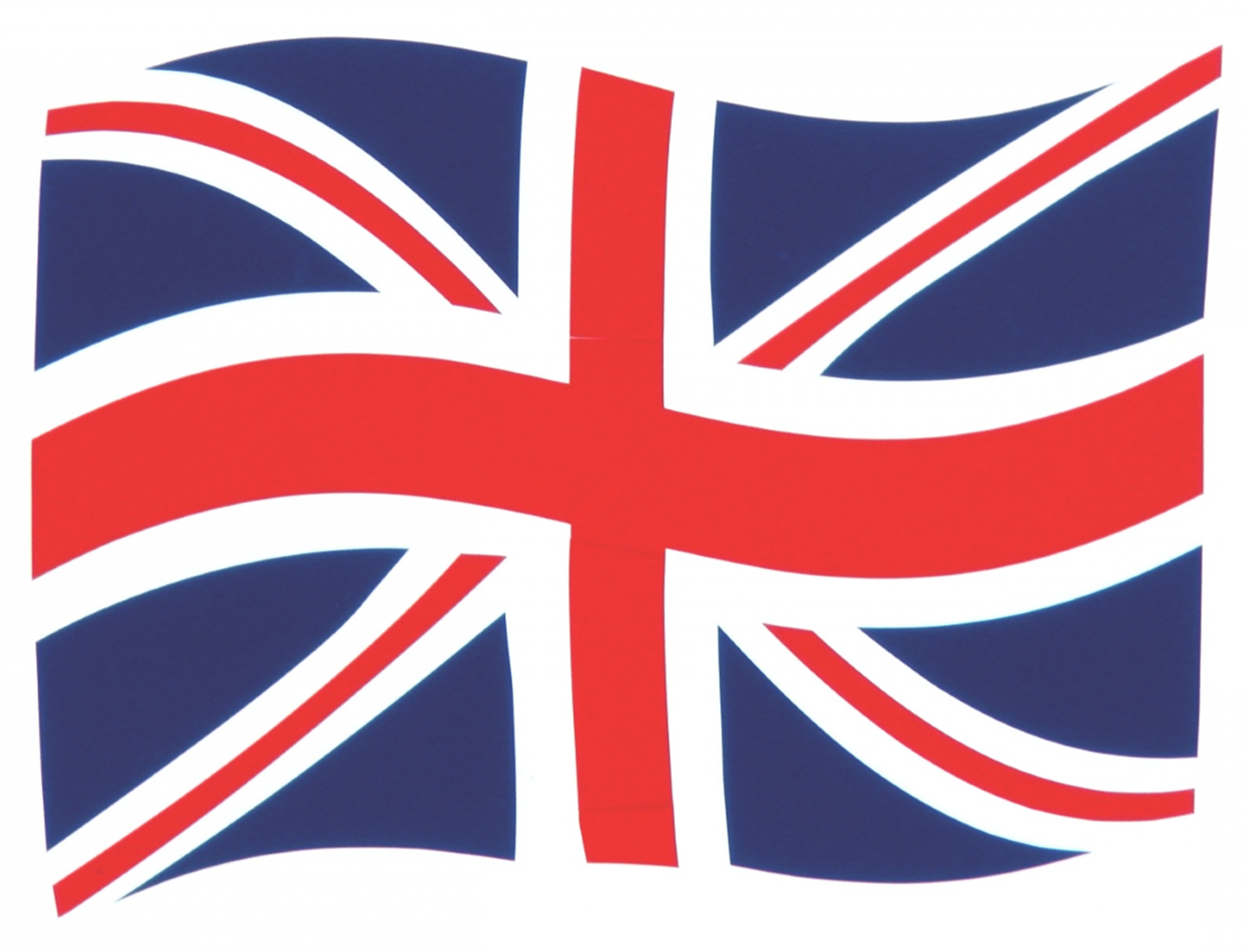The Uffe stone was unveiled on 22 June 1913. Not everyone cared for either the design or the text that could be read on the stone. The well-known author and Nobel laureate, Johannes V. Jensen, thought it was a disgrace. Vejle Amts Folkeblad liked it, they called it "beautiful", "harmonious", "peculiar" and "magnificent". A well-known sculptor from Vejle, Billeschou, had taken care of the more artisanal side of things. The Vejle County Gazette had a detailed description of the stone:
"Let's start with the big lintel.
Its front consists of two slanted folds, which are separated from each other by an approximately vertical edge.
One surface bears the name Vermund, the other the name Uffe; Above each name is placed a crown and below each of them a raven, the symbol of war
As a connection to the lower edge of the surfaces, it is intended to place some wavy lines.
On the edge, which forms the border between the two surfaces, there is an extended sword scrap.
The following inscription must be placed on the back of the lintel:
"I came from Linnet in Vester. The Sons of the teacher training school dragged me”.
Of the three heavy stones that support the lintel, only the one facing the street will receive any decoration. Here is the name Folke, the man who, according to Saxon's account, conveyed to King Vermund at Jelling Kongsgård the message of the Swedish King Atlas's declaration of war on behalf of the Sønderjyders in such manly words that the king handed him back his gold goblet.
In good harmony with this story, the South Jutland lion has been placed on the stone under Folke's name.
The other two headstones in Dyssen will only bear the names of the places from which they were taken, respectively Jelling and Harresø.
Finally, the Plinth. On the front, i.e. under the names Vermund, Uffe and Folke, there is the inscription:
"The son shall lift the father's inheritance", on the back the year 1913, and on the other two 13 April and 22 June respectively. The first date indicates the memorable day when the great stone was brought from Linnet to Jelling, the second the day when the monument was unveiled and handed over to the public.”
The unveiling day itself was a day of celebration in Jelling. The Dannebrog waved over the whole city and two large Dannebrog flags covered the monument. Approximately 3,000 people had gathered in the square around the Uffestenen. An orchestra played the national anthem, and everyone stood up and the men took off their hats and caps. Afterwards they sang together "I was born in Denmark" and then Skat-Rørdam took the floor to welcome on behalf of the Sønderjysk Association. Skat Rørdam had helped found Sønderjysk Forening for Jelling in 1908 and contested the chairmanship. After another joint song, Skat Rørdam gave the actual unveiling speech, and here you understand what mission the stone is actually set for. Because it is actually a memorial, to "remember the men who have lived in this place and the events that have taken place here".
In this connection, Uffe represents the love for the fatherland, and it is he who, with the stone, wanted to remind especially the young people, and especially the students of the teacher's school.
It was Jelling Sønderjyske Forening, of which Skat Rørdam was chairman, that was behind the whole idea of establishing the monument.
He got the idea at a huge folk festival in Jelling in 1912
The South Jutland associations and youth associations in Vejle and the surrounding area had invited 1000 young South Jutland residents to a folk festival on 6-7. July in Vejle and the surrounding towns. The aim of the celebrations was to strengthen the belief in popular community and love for the motherland between people both south and north of the Kongeågrørnsen.
On the last day of the folk festival, there were several special trains to Jelling and horse-drawn carriages, and around 7,000 people gathered in the town. There were speeches and songs, and the smørrebrød brought along is put to good use. Sunday evening freights took the southerners home safely.
And it is during all the festivity that seminary director Hemming Skat Rørdam from Jelling gets the idea for a large monument to commemorate Folkefesten. Collection takes place during the Folkefest itself, and a year later both horses and 80 seminary students snort, moan and hump to get the monument in place.
The top stone alone weighs between five and seven tons. The whole of Jelling is involved in the work to get the monument in place and transported the stones to Smededammen. So here it still stands and draws attention to itself. |




